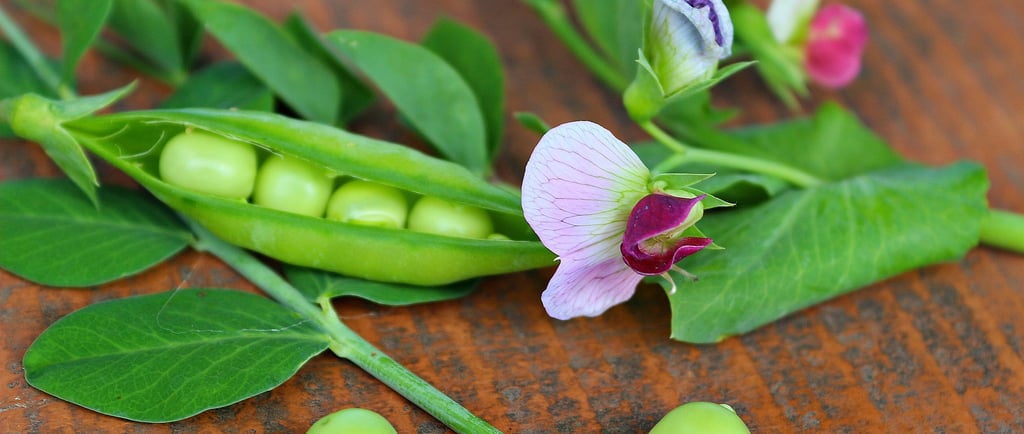🌸➡️🫛From Bloom to Bean📜 Legume Legends
🫛 A follow-up story that connects the Flower and Fruit chapters in the Biology Album. 🌸🌿 It invites children to trace the invisible journey of a flower becoming a fruit through the story of the humble pea pod—an ancient legume that opens itself with grace. As they crack open a fresh green pod, they’re not just discovering seeds, but encountering the botanical concept of dehiscent dry fruits. From the soft, edible pods we eat to the drying fruits left to split and scatter their seeds, this story bridges naturally with other explorations in the Chapter Fruits—comparing dry vs. fleshy fruits, observing indehiscent fruits, and following the seed’s journey toward dispersal. The story sparks wonder: “What other legumes we eat? Can we eat them fresh like the peas?" 💭🍃
BIOLOGY STORIES
6/25/20252 min read


I brought you one very special fruit today—one that people began farming over 6,000 years ago! Let’s look at it together. It’s green, soft, simple… and hiding a secret. 🌿✨ The word fruit comes from Latin fructus, meaning “enjoyment” or “harvest.” It reminds us that a fruit is the joyful result of something long and quiet that began with a flower. 🌸➡️🫛
This is a pea pod. But it didn’t always look like this. Once, not so long ago, it was a flower.
Every pea pod begins as a blossom. Inside that flower was a tiny part called the ovary. And inside the ovary? Tiny eggs, just waiting. Then came a bee… or a breeze… and pollination began. The flower’s work was done, and the ovary, now fertilized, began to grow and change. Slowly, it stretched and thickened… becoming something new: the fruit. And those tiny ovules? They began their own transformation—into seeds, nestled safely inside. 🌸➡️🫛🌱
And what we call a pod is actually a fruit—because it forms from the flower and holds seeds. Each pea inside is a seed, curled up and waiting for its chance to grow. 🌱
Let’s gently open it… pop! Can you see the row of little green pearls? That’s the magic of a legume (👏 le 👏 gume)—a fruit that opens up when ripe to share its treasure. The word legume comes from Latin legumen, meaning “to gather.”
This kind of fruit is called dry and dehiscent (👏 de 👏 his 👏 cent)—from dehiscere, Latin for “to split open.” It means the fruit knows when it’s time to let go of the seeds inside. Peas, beans, lentils—all belong to this special group.
But wait… feel the pod again. Is it dry? No! It’s still soft, green, full of water. That’s because we harvested it early—before it finished its transformation. People discovered long ago that immature legumes can be just as tasty. So while the pea is botanically a dry fruit, we enjoy it fresh—catching it right in the middle of its journey.
And it’s not just peas! Other legumes are also harvested and enjoyed before they fully dry. In Japan and many other countries, young soybeans are picked while still soft and green. They’re steamed and sprinkled with salt to make edamame—a snack that’s both ancient and modern. 🫘✨
And there’s more… The pea is one of the world’s oldest farmed crops. People in Ancient Egypt, Mesopotamia, and Greece grew peas 6,000 years ago. They ate the tender pods when green and dried the seeds to store through winter. Roman farmers grew them too, and medieval monasteries used them to make thick, nourishing soups for fasting days. In 18th-century France, eating fresh green peas became a luxury among royalty—King Louis XIV had them grown in greenhouses to serve out of season! 👑🫛
So… is this a fruit or a vegetable?
💭 I wonder… What other legumes do we eat—and do we always eat them fresh, or must we wait for them to dry first?
✨ Possible Follow-Up Explorations✨
🪴 Grow Your Own Legumes
Soak dried peas or beans overnight and plant in clear cups. Children can:
Observe root and shoot growth
Track when the first flowers appear
Identify when the ovary starts to swell
🗺️ Legume Map
Create a world map of legumes eaten in different cultures, such as:
Lentils (India)
Chickpeas (Middle East)
Soybeans (East Asia)
Black beans (Latin America)
Fava beans (Mediterranean)
📚 Classification Chart: Fruits We Eat
Create two categories:
Fruits we eat when fresh and fleshy (e.g., berries, tomatoes)
Fruits we eat when dry (e.g., peas, nuts, lentils)
With Montessori joy,
Vanina 😊

